Kindly help to check if the attached fulfills the instruction below. I sincerely welcome your corrections and advice on this. Now, change the main() routine so that it creates an AdditionProblem, displays to the user the problem returned by the getProblem() method, reads an answer from the user, and checks to see whether the answer entered by the user agrees with the correct answer as returned by getAnswer(). (It's a good idea to complete this little exercise if you want to use classes like this one in your real math quiz program; doing the exercise will make sure that you know how to use the class.)
Kindly help to check if the attached fulfills the instruction below. I sincerely welcome your corrections and advice on this. Now, change the main() routine so that it creates an AdditionProblem, displays to the user the problem returned by the getProblem() method, reads an answer from the user, and checks to see whether the answer entered by the user agrees with the correct answer as returned by getAnswer(). (It's a good idea to complete this little exercise if you want to use classes like this one in your real math quiz program; doing the exercise will make sure that you know how to use the class.)
Computer Networking: A Top-Down Approach (7th Edition)
7th Edition
ISBN:9780133594140
Author:James Kurose, Keith Ross
Publisher:James Kurose, Keith Ross
Chapter1: Computer Networks And The Internet
Section: Chapter Questions
Problem R1RQ: What is the difference between a host and an end system? List several different types of end...
Related questions
Question
100%
Kindly help to check if the attached fulfills the instruction below. I sincerely welcome your corrections and advice on this.
Now, change the main() routine so that it creates an AdditionProblem, displays to the user the problem returned by the getProblem() method, reads an answer from the user, and checks to see whether the answer entered by the user agrees with the correct answer as returned by getAnswer(). (It's a good idea to complete this little exercise if you want to use classes like this one in your real math quiz program; doing the exercise will make sure that you know how to use the class.)
![e eclipse-workspace - Lab1/src/TextlO.java - Eclipse IDE
File Edit Source Refactor Navigate Search Project Run Window Help
E Package Explorer a Project Explorer X
D MathQuizjava
D TextlO.java 3
E Outline 8
1
2
vE Lab1
> E JRE System Library [JavaSE-15]
v E src
v # (default package)
> D MathQuiz.java
> D TextlO.java
30 import java.io.";
4 import java.util.IllegalFormatException;
5 import java.util.regex.Matcher;
import java.util.regex.Pattern;
© TextlO
SF EOF : char
SF EOLN: char
OS readStandardinput) : void
o$ readStream(InputStream) : vo
OS readStream(Reader) : void
eS
7
8 import javax.swing.JFilechooser;
9 import javax.swing.JOptionPane;
readFile(String) : void
oS readUserSelectedFile() : boole
oS writeStandardOutput() : void
oS writeStream(OutputStream) :
eS writeStream(PrintWriter) : voic
oS writeFile(String) : void
oS writeUserSelectedFile() : boole
o$ getlnputFileName() : String
o$ getOutputFileName() : String
• put(Object) : void
Os put(Object, int) : void
•S putln(Object) : void
• putln(Object, int) : void
putln) : void
o$ putf(String, Object.): void
•S eoln() : boolean
10
110 /**
* TextIO provides a set of static methods for reading and writing text. By default, it rea
* from standard input and writes to standard output, but it is possible to redirect the inp
* and output to files or to other input and output streams. When the standard input and ou
* streams are being used, the input methods will not produce an error; instead, the user is
* repeatedly prompted for input until a legal input is entered. (If standard input has bee
* changed externally, as by file redirection on the command line, this is not a reasonable
behavior; to handle this case, TextIO will give up after 10 consecutive illegal inputs an
* will throw an IllegalArgumentException.) For the most part, any other
* error will be translated into an IllegalArguementException.
* <p>For writing to standard output, the output methods in this class pretty much
* duplicate the functionality of System.out, and System.out can be used interchangeably wit
* <p>This class does not use optimal Java programming practices. It is designed specifical
* usable even by a beginning programmer who has not yet learned about objects and exception
* everything is in a single source file that compiles into a single class file, all the met
* static methods, and none of the methods throw exceptions that would require try...catch s
Also for this reason, all exceptions are converted into IllegalArgumentExceptions, even w
exception type doesn't really make sense.
12
13
14
15
16
17
*
18
19
20
21
22
23
24
25
26
27
*
28
S ..sn. L-l-
R Problems @ Javadoc e Declaration e Console X
MathQuiz [Java Application] C:\Users\user\.p2\pool\plugins\org.eclipse.justj.openjdk.hotspot.jre.full.win32.x86_64_15.0.2.v20210201-0955\jre\bin\javaw.exe (Jun 23, 2021, 7:37:02 PM)
what's your name?](/v2/_next/image?url=https%3A%2F%2Fcontent.bartleby.com%2Fqna-images%2Fquestion%2F5dd53dd1-02d0-442f-939d-39f076a6afbe%2Ff36035ca-e05e-419a-978c-4b72ba9f4842%2Fwkmen4_processed.png&w=3840&q=75)
Transcribed Image Text:e eclipse-workspace - Lab1/src/TextlO.java - Eclipse IDE
File Edit Source Refactor Navigate Search Project Run Window Help
E Package Explorer a Project Explorer X
D MathQuizjava
D TextlO.java 3
E Outline 8
1
2
vE Lab1
> E JRE System Library [JavaSE-15]
v E src
v # (default package)
> D MathQuiz.java
> D TextlO.java
30 import java.io.";
4 import java.util.IllegalFormatException;
5 import java.util.regex.Matcher;
import java.util.regex.Pattern;
© TextlO
SF EOF : char
SF EOLN: char
OS readStandardinput) : void
o$ readStream(InputStream) : vo
OS readStream(Reader) : void
eS
7
8 import javax.swing.JFilechooser;
9 import javax.swing.JOptionPane;
readFile(String) : void
oS readUserSelectedFile() : boole
oS writeStandardOutput() : void
oS writeStream(OutputStream) :
eS writeStream(PrintWriter) : voic
oS writeFile(String) : void
oS writeUserSelectedFile() : boole
o$ getlnputFileName() : String
o$ getOutputFileName() : String
• put(Object) : void
Os put(Object, int) : void
•S putln(Object) : void
• putln(Object, int) : void
putln) : void
o$ putf(String, Object.): void
•S eoln() : boolean
10
110 /**
* TextIO provides a set of static methods for reading and writing text. By default, it rea
* from standard input and writes to standard output, but it is possible to redirect the inp
* and output to files or to other input and output streams. When the standard input and ou
* streams are being used, the input methods will not produce an error; instead, the user is
* repeatedly prompted for input until a legal input is entered. (If standard input has bee
* changed externally, as by file redirection on the command line, this is not a reasonable
behavior; to handle this case, TextIO will give up after 10 consecutive illegal inputs an
* will throw an IllegalArgumentException.) For the most part, any other
* error will be translated into an IllegalArguementException.
* <p>For writing to standard output, the output methods in this class pretty much
* duplicate the functionality of System.out, and System.out can be used interchangeably wit
* <p>This class does not use optimal Java programming practices. It is designed specifical
* usable even by a beginning programmer who has not yet learned about objects and exception
* everything is in a single source file that compiles into a single class file, all the met
* static methods, and none of the methods throw exceptions that would require try...catch s
Also for this reason, all exceptions are converted into IllegalArgumentExceptions, even w
exception type doesn't really make sense.
12
13
14
15
16
17
*
18
19
20
21
22
23
24
25
26
27
*
28
S ..sn. L-l-
R Problems @ Javadoc e Declaration e Console X
MathQuiz [Java Application] C:\Users\user\.p2\pool\plugins\org.eclipse.justj.openjdk.hotspot.jre.full.win32.x86_64_15.0.2.v20210201-0955\jre\bin\javaw.exe (Jun 23, 2021, 7:37:02 PM)
what's your name?
Expert Solution
This question has been solved!
Explore an expertly crafted, step-by-step solution for a thorough understanding of key concepts.
This is a popular solution!
Trending now
This is a popular solution!
Step by step
Solved in 2 steps

Recommended textbooks for you
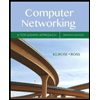
Computer Networking: A Top-Down Approach (7th Edi…
Computer Engineering
ISBN:
9780133594140
Author:
James Kurose, Keith Ross
Publisher:
PEARSON
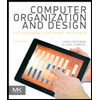
Computer Organization and Design MIPS Edition, Fi…
Computer Engineering
ISBN:
9780124077263
Author:
David A. Patterson, John L. Hennessy
Publisher:
Elsevier Science
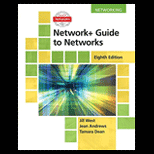
Network+ Guide to Networks (MindTap Course List)
Computer Engineering
ISBN:
9781337569330
Author:
Jill West, Tamara Dean, Jean Andrews
Publisher:
Cengage Learning

Computer Networking: A Top-Down Approach (7th Edi…
Computer Engineering
ISBN:
9780133594140
Author:
James Kurose, Keith Ross
Publisher:
PEARSON

Computer Organization and Design MIPS Edition, Fi…
Computer Engineering
ISBN:
9780124077263
Author:
David A. Patterson, John L. Hennessy
Publisher:
Elsevier Science

Network+ Guide to Networks (MindTap Course List)
Computer Engineering
ISBN:
9781337569330
Author:
Jill West, Tamara Dean, Jean Andrews
Publisher:
Cengage Learning
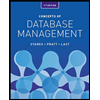
Concepts of Database Management
Computer Engineering
ISBN:
9781337093422
Author:
Joy L. Starks, Philip J. Pratt, Mary Z. Last
Publisher:
Cengage Learning
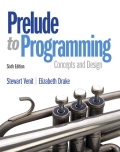
Prelude to Programming
Computer Engineering
ISBN:
9780133750423
Author:
VENIT, Stewart
Publisher:
Pearson Education
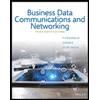
Sc Business Data Communications and Networking, T…
Computer Engineering
ISBN:
9781119368830
Author:
FITZGERALD
Publisher:
WILEY